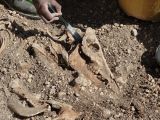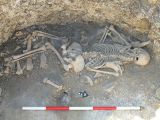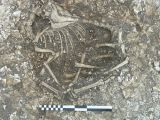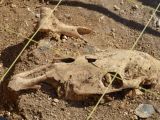While exploring an archaeological site near the village of Winterborne Kingston in Dorset, UK, a group of Bournemouth University students came across the remains of an ancient town that flourished in this corner of the world sometime during the Iron Age.
The team has so far unearthed a total of 16 prehistoric homes. Having surveyed the area, they estimate that they have at least 150 others to excavate and bring to light.
The town predates the Roman conquest
Archaeologist Miles Russell says that this recently discovered settlement in present-day Dorset dates back to before the Roman invasion of Britain, which happened in the 1st century AD. In fact, he thinks the town was abandoned soon after the arrival of the Romans.
“They are pre-Roman house structures, the last that inhabitants would have been living in before the Romans arrived,” the researcher commented on this discovery.
Unlike other prehistoric settlements found scattered around Britain in recent years, this one was not a hill fort. On the contrary, the ancient town of Duropolis, as the Bournemouth University team named it, was an open settlement, and a fairly large one for that matter.
This goes to show that not all ancient Britons were terrified at the thought of an attack and lived in hill forts to keep themselves safe. Others were quite content with life out in the open.
“These inhabitants lived in this fertile farmland, away from the traditional hill forts we are all used to hearing about,” explained archaeologist Miles Russell.
And now for the gruesome part
Apart from bits and pieces of homes that ancient Britons lived in, the Bournemouth University team exploring the site of the prehistoric town of Duropolis uncovered a bonanza of animal remains.
When they got around to studying them closely, they had quite a shock. Thus, the archaeologists say that the bones, found buried beneath the ancient homes, seemed to belong to hybrid monsters.
In a nutshell, what the researcher team found were hideous beasts such as sheep with two heads or with a bull's head attached to their body and cows sporting a horse head instead of their proper one. They even discovered a cow with horse legs and a horse with a cow horn attached to its head.
Since hybrids like these don't really exist, the only explanation is that ancient folks in Duropolis made them themselves by chopping up perfectly normal animals and then mixing and matching body parts. It is believed that the hybrids were created and buried under homes to appease the gods.
“Iron Age inhabitants placed these strange deposits in the bottom of the pits, before back-filling them. It’s as if they were putting a gift back like a ‘thank you,’” said Miles Russell, as cited by DM.
Interestingly, one of these pits containing animal remains morphed into hybrid monsters also produced the skeleton of a woman, who the researchers believe was offered as a sacrifice to the gods.
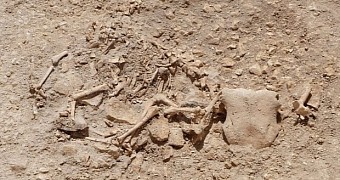
 14 DAY TRIAL //
14 DAY TRIAL // 

